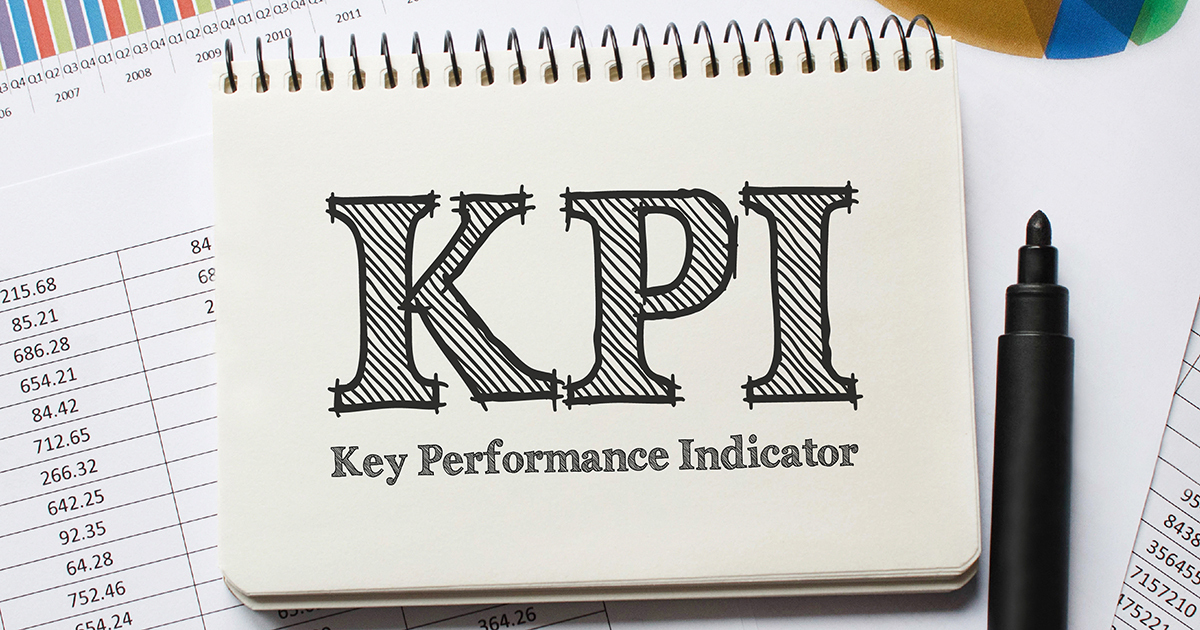Content marketing ROI has been a rising trend for the past few years and 2021 was no exception. What does that mean for your business in 2022?
It’s simple – optimize your content techniques to fast-track business growth.
A powerful content marketing strategy can be 3 times more efficient than outbound marketing when it comes to generating leads. With such promising statistics, content marketing is considered a valuable business tool to increase engagement.
This brings us to an important question. How can you check whether your content strategy is working?
The power of content marketing KPIs
The answer is content marketing key performance indicators ( KPIs). Before we delve further into how to establish KPIs for your company, let’s explore why you need them in the first place.
You spend a lot of time and effort planning and creating social media posts or blogs for your business. However, you are not getting the audience response you want.
There could be a few reasons for this including:
- The content is not exciting or engaging enough for the audience
- You are not using the correct KPIs to measure content performance
Content creation is a critical process that requires absolute clarity in business goals. When you know what you want to accomplish only then you will be able to design relevant content. With the right content, it then actually helps to measure success through metrics. The main aim of KPIs is to gauge how content is received online.
For an initial analysis, you can always refer to Google Analytics. But core content marketing KPIs can deliver much more detail. By using the right data, companies can set customized KPIs that evolve according to the business needs.
To help you get started, here is a list of actionable content marketing KPIs businesses can track to improve their ROI:
1. Organic page traffic
For any type of content you create, it is important to track the traffic it generates. Without unique page visitors, you won’t have a lot to build on. Once you have established a strong audience, then you can move on to convert traffic to revenue.
Organic page traffic is a key content marketing KPI that can be used along with other metrics to get a better understanding of content performance. One way to attract visitors and increase organic page traffic is to put up content that resonates with your audience.
Start off with a captivating headline and move on to concise but interesting content. Let’s take a look at the Neil Patel blog that specializes in search engine and conversion optimization.
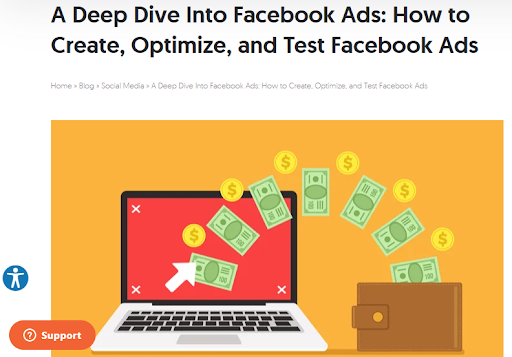
The headline is straightforward and tells the audience exactly what they are going to read about. Precise headings in Google search have a higher chance of attracting viewers and increasing overall page traffic.
Another great way to redirect traffic to your blog is to share its handle on your social networks. This works wonders as it combines the audience from different social media channels and increases unique page views for your main website.
Check out this Facebook post by Mashable with an intriguing headline and a link to the main website. This post definitely stirs up engagement and is something the audience might be interested to read more about. With the comments and shares pouring in, Mashable redirects more viewers to the main website to increase traffic.

2. Time spent on page:
Recording the time viewers spend on your page is one of the most critical content marketing KPIs. Even if you successfully manage to increase organic traffic for your page, how can you tell whether people are consuming the content you have posted?
According to experts, the time spent on site is a great metric to measure the performance of your content.
To create impactful content, find out what grabs the audience’s attention. The very first thing that captures interest is a good-looking website.
Yes, that’s right. Add attractive background images that make your site stand out. Creative Commons is one of the most popular sites listed on Moz with a homepage that is nothing less than a work of art.
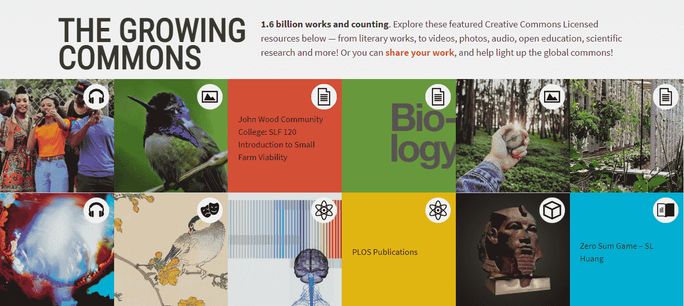
Next, focus on creating interactive content. This can be anything that raises curiosityーeducational or humorous content. Buzzfeed is very popular for putting up quirky and highly engaging quizzes on their website.

The audience loves interactive content and there is a high chance of it being shared on social media channels. Do you know what this means? Yes, that’s right, more time spent on your page!
On-site actions reveal meaningful insights about customer intentions. One smart way to interpret the time viewers spend on your page is to use a heat mapping tool.
A heat map is a data analysis software that uses a warm to cool color spectrum to display which parts of a page receive the most attention. Moreover, a heat map can also help you determine which parts of the page should have the most important information.
3. Bounce rate
As an extension to the time spent on a page, the bounce rate tells you whether the content was able to retain the reader’s attention by triggering further clicks. A high bounce rate exists when a user closes the site after viewing a single page. Unlike other content marketing KPIs, the bounce rate is a little tricky to understand.
According to a RocketFuel study, the majority of websites will experience a bounce rate between 26%-70%.
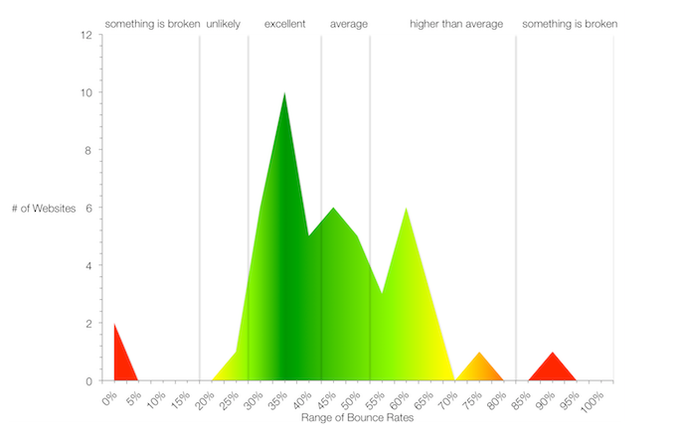
By looking at the average bounce rates statistics, it is safe to stay between 30%-60%. Let’s take a look at how you can maintain a fairly average bounce rate for your content pages:
Fix slow to load pages: Google lists site speed in its ranking algorithm. This ensures that users end up having a positive experience while browsing. Invest in some pagespeed tools to analyze your page performance.
Improve content readability: The best way to get your message across to the audience – keep it simple and easy to read. Tools like WordPress can help you improve content readability before you post it online. The image below shows what improvements can be made by addressing the concerns in the red bullets. How convenient is that?
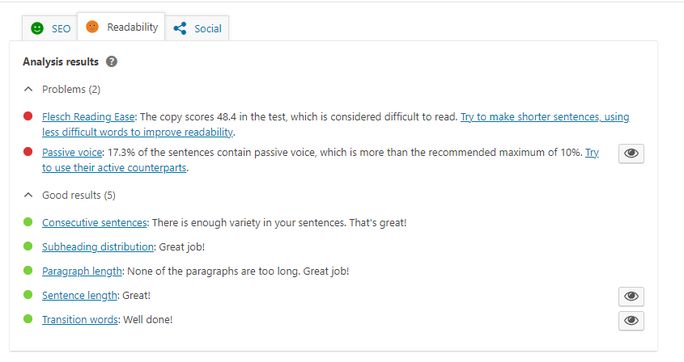
Create search engine optimized content: While this applies to every content marketing KPI in general, SEO is highly critical to control your bounce rate.
Thus, it is important to:
- Fix Incorrect page titles and meta descriptions
- Avoid broken links or single landing pages that limit the user experience on the website.
- Set up multiple landing pages for high-ranked keywords and provide internal links to push users to read on
4. Lead generation
If used correctly, content marketing can help generate revenue for the company. While it is tough for organic content to generate leads, it is not impossible.
The key to a successful lead generation campaign is to post the right content for the right audience. For this, you need to think like a user. What does my audience want to see on my page and how do they want to see it?
The same type of content will not be of interest to different types of viewers. Segment your audience into main categories and start designing relevant content. Remember your main agenda is to turn a page visitor into a potential lead.
For highly visual industries like cosmetics, a great lead generation technique is to put up user-generated product videos to build trust and eventually get more customers.
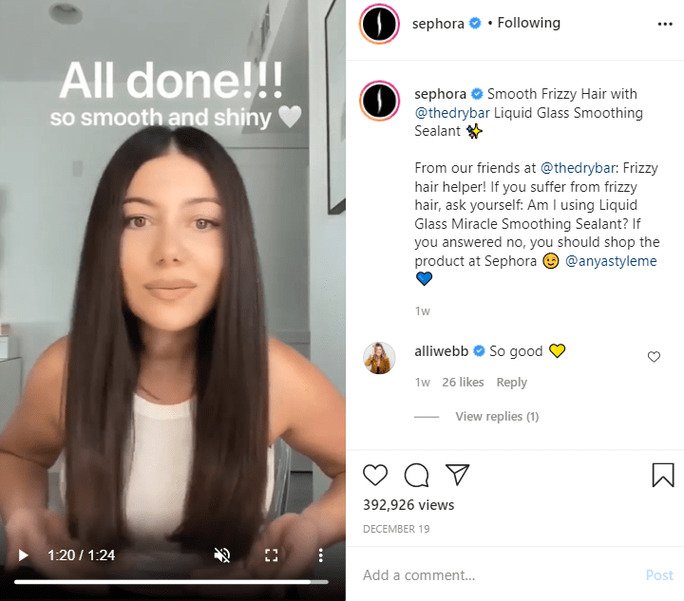
In the short video posted on Sephora’s Instagram handle, viewers can see the product being used, its results, and where to buy it from. Simple yet effective.
Lead generation is all about what people see when they open your site. That means you need to design superb landing pages. Hubspot compiled a list of the best landing pages designed in 2020 and Shopify made top of the list.
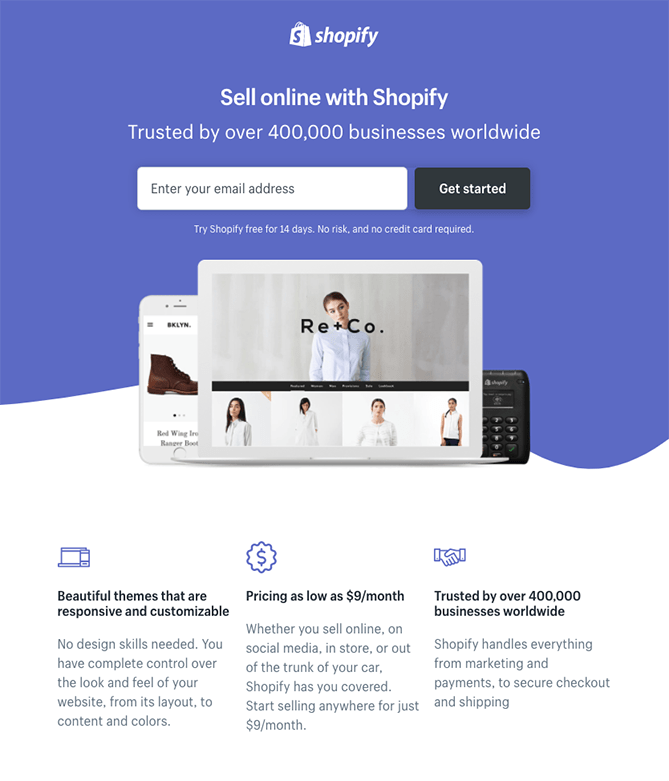
Sign-up landing pages should be short, informative, and to the point. That’s exactly what Shopify has aimed for. With minimal design elements, Shopify highlights its value proposition and biggest strength─customer loyalty.
Facebook ads are a terrific tool when it comes to generating leads through paid marketing on social media. Their instant experience cuts down the need of creating a landing page and helps astronomically in decreasing bounce rates.
5. Click-through rates:
The reason behind putting up content on social media is to track conversion rates. Basically, you have to keep a lookout for whether the viewers are taking the action required of them. Also known as click-through rates (CTR) on the link shared in the posts.
Many companies share heartwarming content to win the audience’s support. Take the example of Microsoft’s campaign about accessible technology on Twitter that received 95% positive sentiment from the audience. The caption of the post makes the audience click on the video link and redirect traffic to the main website.

To achieve a high CTR, your post should stand out in search engine results too.
An attractive post contains a well-written meta description and a compelling ad copy. Apart from that, work on your keyword. Don’t choose a broad keyword. Instead, aim for targeted keywords that can pop up in search results.
Lastly, add images to your post as they make content more appealing to readers. When you are done, it’s important to test run your post to see how it will look like to the audience.
WordPress users can use Yoast preview for a final check before publishing a link online. This blogpost by HackerEarth has a CTR of 28%. Why? Short captivating title.

6. Brand subscribers
Perhaps the most simple way to judge whether your content is working is to look at the number of subscribers you have. It could be from any platform be it a website, blog, or even a webinar.
As long as your subscribers are increasing you have nothing to worry about. However, if you are stuck with a few subscribers then it’s time to get the creativity on.
A killer Call to Action (CTA) is your game plan for getting more subscribers. Depending on your content marketing campaign, there are various CTA’s that work for increasing your email subscriptions:
- Sign up
- Join us
- Like our XYZ (social media) page
- Subscribe
- Get started
One of the biggest online streaming sites Netflix offers its customers the chance to end their subscription anytime they want without any inconvenience. Customers love the flexibility and that’s one of the reasons why Netflix subscribers are rising steadily over the years.
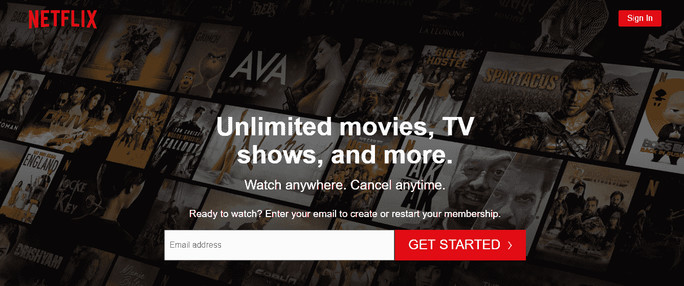
Getting more subscribers is a great way to generate customer leads by offering them superb incentives. The Dog Bakery offers a $10 off from birthday orders if owners register their pets with an email address. Attractive offers to get more sign-ups is a smart move to build a customer base for future interaction.
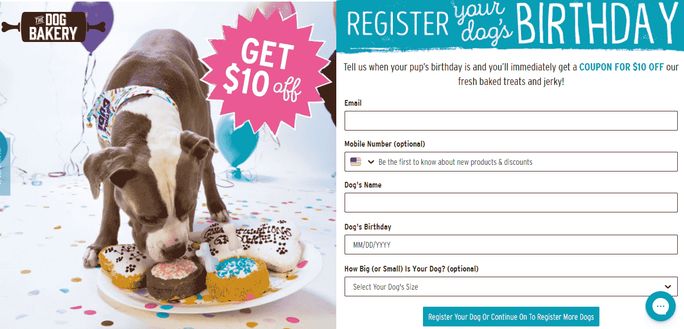
Aligning business goals with content marketing KPIs
For instance, if a business objective is to increase revenue by 10%. Think about how you can position your content to accomplish that. The relevant KPIs for sales would include lead generation and conversion rates.
While working on your content KPIs, remember to be creative. Not all indicators work for all industries. You can even come up with a customized KPI if that’s what your business needs!
Also, don’t forget to revise content marketing KPIs as the business grows. Every stage has different requirements that need to be reflected in your content marketing campaign.
Lastly, the right KPI can only do so much if you don’t take action. If you notice a sharp decline in the number of subscribers, do something about it.
Call in a team huddle and come up with a new strategy to pick up followers. Content is a powerful tool to shape your online brand presence. If you play your cards right you can fast track brand growth to reach new milestones.
